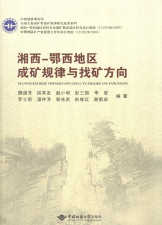
主要责任者: 魏道芳,段其发
责任方式: 等编著
出版者: 中国地质大学出版社
出版地: 武汉
字数: 428 千字
页码: 1-187
开本: 16
中图分类号: ①P612②P624
语种:中
定价:98.00
出版时间:2014-09
丛书多卷书否:否
书目简介:本册工具书共收录57条词条。
| 词条 | 湘西-鄂西地区成矿规律与找矿方向 |
| 类别 | 中文百科知识 |
| 释义 |  主要责任者: 魏道芳,段其发 责任方式: 等编著 出版者: 中国地质大学出版社 出版地: 武汉 字数: 428 千字 页码: 1-187 开本: 16 中图分类号: ①P612②P624 语种:中 定价:98.00 出版时间:2014-09 丛书多卷书否:否 书目简介:本册工具书共收录57条词条。 |
| 随便看 |
开放百科全书收录579518条英语、德语、日语等多语种百科知识,基本涵盖了大多数领域的百科知识,是一部内容自由、开放的电子版国际百科全书。